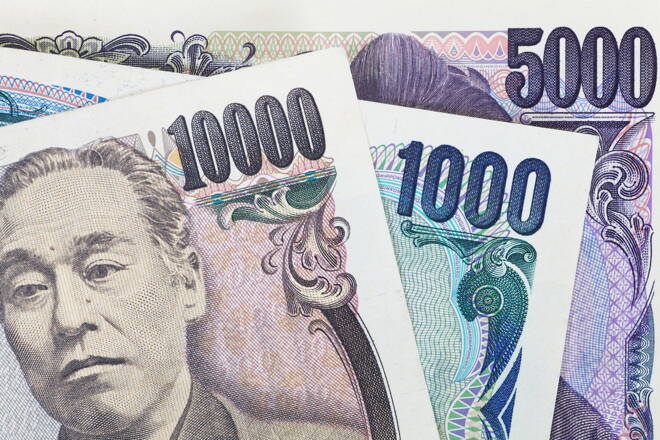Advertisement
Advertisement
Risk-On Trade Underpins Aussie, Kiwi, Pressures Japanese Yen
By:
The Dollar/Yen had an up and down week before settling slightly better. The Australian Dollar posted a two-sided trade before settling higher. The New Zealand Dollar was whip-sawed a little by the news from Australia, but better-than-expected ANZ Business Confidence and GDP reports helped stabilize the currency into its higher weekly close.
The Asian Pacific currencies posted mixed results with the Japanese Yen finishing slightly lower on lackluster trading, and the Australian and New Zealand Dollars posting solid gains on stronger-than-expected domestic and global economic data. Hopes that the Phase One trade agreement between the United States and China would help the global economy recover from the threat of recession also underpinned the Aussie and the Kiwi.
Japanese Yen
The Dollar/Yen had an up and down week before settling slightly better. The mostly sideways price action indicates investor indecision and impending volatility. While prices remained just slightly under the May 30 top at 109.930, buyers were scarce which may be related to light pre-holiday volume or position-squaring ahead of the new year.
Last week, the USD/JPY settled at 109.456, up 0.102 or +0.09%.
The Dollar/Yen was also underpinned by rising U.S. Treasury yields, which widened the spread between U.S. Government bonds and Japanese Government bonds. Stronger demand for risky assets also supported the Forex pair.
Better-than-expected U.S. economic data also helped support the U.S. Dollar. Flash Manufacturing PMI matched expectations. Building Permits and Housing starts beat expectations. Industrial Production also came in higher than expected. The news reduced the chances of a Fed rate cut in 2020.
In Japan, Flash Manufacturing PMI came in as expected. Tertiary Industry Activity fell more than estimated. National Core CPI met expectations with at 0.5% reading.
The Bank of Japan kept monetary policy steady and maintained its upbeat assessment of the economy, suggesting that no imminent expansion of stimulus was forthcoming despite lingering overseas risks that weigh on a fragile recovery.
As expected, the BOJ maintained its short-term interest rate target at -0.1% and a pledge to guide 10-year government bonds yields around 0%, by a 7-2 vote.
Australian Dollar
The Australian Dollar posted a two-sided trade before settling higher. Helping to drive the Aussie lower were dovish minutes from the Reserve Bank of Australia (RBA). Offsetting the move was stronger-than-expected employment data.
Last week, the AUD/USD settled at .6901, up 0.0025 or +0.36%.
Minutes from a recent meeting by the Reserve Bank of Australia (RBA) showed the central bank’s willingness to move on monetary policy if necessary.
“The Board would continue to monitor developments in the labor market closely and adjust monetary policy if needed to support sustainable growth in the economy and the achievement of the inflation target over time,” the minutes showed. “Lower interest rates would provide more Australians with jobs and assist with achieving more assured progress towards the inflation target.”
In other news, Australia added 40,000 jobs in November to nearly 13 million, and the seasonally adjusted unemployment rate in Australia edged down 0.1 percentage point to 5.2% from the previous month, according to data released by the Australian Bureau of Statistics.
The minutes drove the Aussie lower as traders priced in a rate cut in February, however, the chances of a rate cut were reduced by the solid jobs report.
New Zealand Dollar
The New Zealand Dollar was whip-sawed a little by the news from Australia, but better-than-expected ANZ Business Confidence and GDP reports helped stabilize the currency into its higher weekly close.
The NZD/USD settled at .6603, up 0.0012 or +0.19%.
The ANZ Business Confidence report came in at -13.2, an improvement from the previously reported -26.4.
New Zealand’s gross domestic product (GDP) increased 0.7 percent in the September 2019 quarter, and 2.7 percent over the year, boosted by retail spending, the country’s statistics department Stats NZ said.
GDP growth for the September quarter has exceeded expectations, showing the economy is in good shape, Finance Minister Grant Robertson said.
About the Author
James Hyerczykauthor
James Hyerczyk is a U.S. based seasoned technical analyst and educator with over 40 years of experience in market analysis and trading, specializing in chart patterns and price movement. He is the author of two books on technical analysis and has a background in both futures and stock markets.
Advertisement
